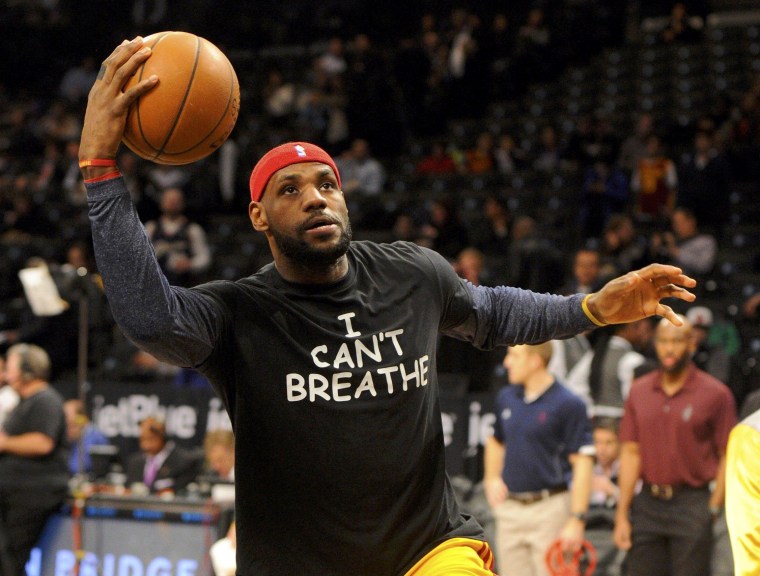Thousands of Americans are planning to come to Washington this Saturday to protest police brutality and outline their legislative demands for Congress. Promoted by the Twitter hashtag #Justice4All, the march will include the families of Eric Garner and Michael Brown, two unarmed men killed by police officers.
Saturday’s march will be a more traditional protest, especially compared with other ones over the past two weeks, usually resulting in spontaneous demonstrations in cities across America. These demonstrations have varied in size and effect, but generally grew from social media posts on Facebook, Twitter, and Instagram that used the hashtags #ShutItDown and #ItStopsToday.
Some call it “hashtag activism.”
“Hashtag activism is what happens when someone tries to raise public awareness of a political issue using some clever or biting keyword on social media,” said Philip Howard, the Principle Investigator for Digital Activism Research Project. His group studied and collected data from thousands of campaigns around the world. “If your idea—linked to a good hashtag—gains traction you’ve started a kind of awareness campaign,” he explained.
Just the hashtags #Ferguson, #Eric Garner, and #ICantBreathe (referencing Garner’s final words captured on video) have been used almost 10 million times on Twitter over the past 30 days, according to Topsy, a website that monitors web traffic.
Several experts have said this online activism that led to #Kony2012, #BringBackOurGirls, and now #ICantBreathe is good at having an instant impact and raising mainstream awareness. “But there aren’t very many good examples of hashtag activism that have actually produced big public policy initiatives or major changes in public opinion,” Howard adds.
But is it different this time?
After the Ferguson decision, President Obama told peaceful protesters he will personally work with them. Since then, he’s requested funding for 50,000 police body cameras, created a task force to get specific recommendations on building trust between communities and law enforcement and invited young leaders to the White House for a meeting in the Oval Office.
“It’s the first time I’ve seen the president meet on issues like this with people who are so close to the ground. And I think that's significant. That generally doesn’t happen,” said Hemly Ordonez. Ordonez is the Vice President of Digital Strategy and Mobilization at Fission Strategy, a company that uses digital tools to achieve social action. She says Obama’s actions are “a signal for policy makers that they have to take this seriously. The White House is taking this seriously.”
Earlier this week, Senator Dick Durbin, D-Ill., chaired a hearing focused on criminal justice reforms and policing practices. House Speaker John Boehner hasn’t ruled out hearings in the House.
On Wednesday, the Senate passed the Death in Custody Reporting Act with unanimous consent. The bill, which passed the House last year and will be sent to President Obama, requires law enforcement officials to report deaths of people killed during arrest or in police custody. Increasing transparency and collecting data of police killings was a demand from many protesters.
The response to public anger has not been limited to just Washington. In New York City, Mayor Bill de Blasio announced a police retraining program. In Cleveland, the Justice Department is working with the police department to find a way to address what Attorney General Eric Holder called a possible “pattern and practice of using excessive force.”
“This is an example of how hashtag activism, with massive public demonstrations and sustained news coverage, can produce big results,” Howard says. “Hashtag activism kept #ferguson events in public consciousness and the national headlines much longer than other similar incidents. There were pictures, videos, and testimonials to link to.”
Organizers on the ground note the “small victories” in reforms taking shape around the country, but caution it’s not only because of the hashtags.

“A lot of this is spontaneous, but the structure was put in place by the organizations on the ground,” said Phillip Agnew, one of the young activists who met with President Obama. Agnew is the executive director of Dream Defenders, a group formed in response to the death of Trayvon Martin in 2012 and one that’s been active in organizing protests in recent weeks.
Agnew calls social media a “megaphone” that supplements groundwork.
Ordonez doesn’t disagree. “What happened around Trayvon started building critical mass on the ground,” she said. “Groups shared techniques and tactics and saw what worked and what was happening.” The organization, she says, made the online aspect more effective.
Jennifer Earl author of the book “Digitally Enabled Social Change,” suggests the speedy reaction to national demonstrations sparked online should not be surprising.
“It is spreading as quickly as an online protest can spread, but is bringing about repercussions,” Earl said.
As for those who criticize online action, “there is this nostalgia for traditional forms of activism that make us want to believe that those forms have always been and will always be successful,” Earl explains. “But it’s not always true.”
Earl adds, “Sometimes offline activism works, sometimes it doesn’t.”
And so far, that seems to be true for online activism, too, she adds.